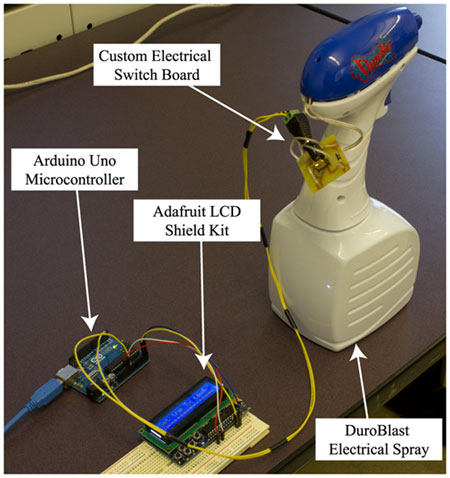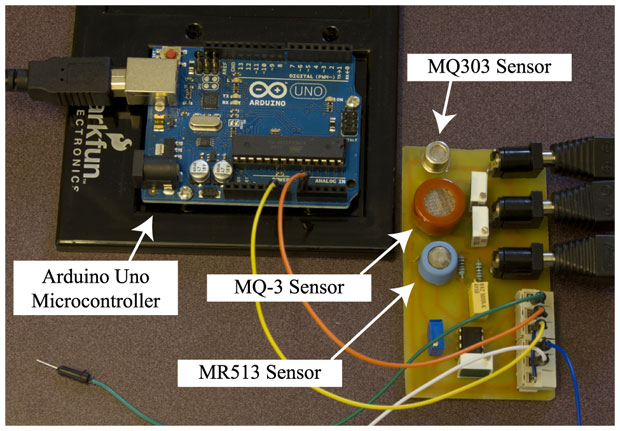
Isopropyl alcohol is widely used as a solvent and a cleaning fluid, as well as in rubbing alcohol products, but researchers at two universities in Canada and the UK recently managed to use it to transmit a text message.
Nariman Farsad, a doctoral candidate at York University, led the experiment, working with Andrew Eckford, a professor at York, and Weisi Guo, the University of Warwick engineering professor who initiated the research.
The experiment used Arduino computers, an electronic spray to release the alcohol, fans to blow the alcohol along, and sensors for detecting the chemical signals and demodulating them back into text.

The device is the first implementation of a microscopic data communication system using chemical signals, and it is one of very few implementations of molecular communication at any dimension, according to the researchers.
Their findings may require rethinking of the mathematical tools used to calculate microscale communications.
“The system will most likely not be suitable for outdoor applications, or where there are strong interfering [air] currents,” Farsad told TechNewsWorld. However, there are “niche applications where radio does not perform well and there are no interfering currents.”
Examples are underground communications in mines and sewer systems, and closed environments such as pipes and ducts.
What the Experiment Entailed
The researchers used the Arduino Uno microcontroller board for their transmitter.
For text entry, they used an Adafruit 16×2-character LCD Shield Kit that has six push buttons. The researchers wrote a program that let users enter text through the LCD’s buttons.
They used the ITA2 code, which uses five bits to represent each letter in the alphabet.
The researchers designed an electrical switch board to hook up the transmitter with a DuroBlast electronic spray, which has a battery-operated electrical pump. Programming the microcontroller board let them control the duration of the sprays.
Another Arduino board was used for the receiver. It was linked to a custom-made PCB board on which three alcohol sensors with different sensitivities, power and operation circuit diagrams were mounted. The sensors all use a metal oxide semiconductor detection layer to detect the alcohol.
Blowing in the Wind
Tabletop fans were used to blow the alcohol mist from the transmitter to the receiver, which was placed some distance away.

Spray duration was set at 100 ms. The apparatus sprayed alcohol every three seconds when the bit at the beginning of the spray duration was a 1; when it was zero, the apparatus would not emit a spray.
The researchers found that the sensors’ responses were nonlinear — for example, between the 13th and 15th second, when the seventh periodic spray was discharged, the sensors showed a drop in voltage instead of an increase, as they should do when there is more alcohol in the air.
However, they do not know why.
Most molecular communication systems and many of the mathematical tools used in the literature on this subject are assumed to be linear, so this might require some rethinking of the assumptions about these systems.
Gotta Be Useful
Molecular communication systems might be useful in targeted drug delivery and medical diagnostics, the researchers suggested, or in sewer systems, pipelines, smart cities, and disaster search and rescue operations.
“I’m struggling to understand the use cases,” Jagdish Rebello, director of communications and electronics research at IHS, told TechNewsWorld. “They’re talking about nonlinear effects — and when you don’t have a linear response, you have a lot of problems.”
The concept “is interesting from a scientific point of view, and could be used in sewage systems or where cellphones don’t work, or data transmission at the microscopic level for targeted drug delivery,” allowed Ronald Gruia, director, emerging telecoms, at Frost & Sullivan. “But the technology’s going to have a very narrow spectrum of use.”
The researchers plan to shrink the size of their platform by an order of magnitude for each new generation of devices until they reach the microscale level, Farsad said. They are already working on the second generation and “hope to reach microscale in a couple of years.”





















































